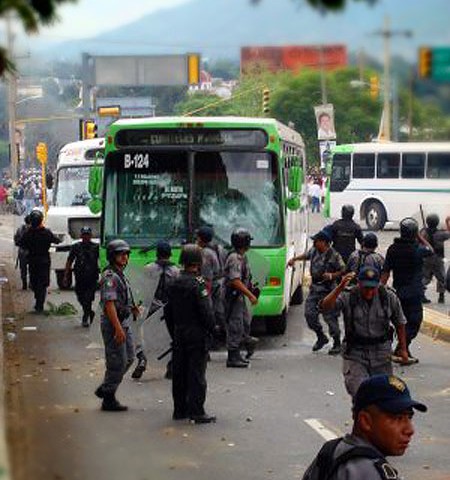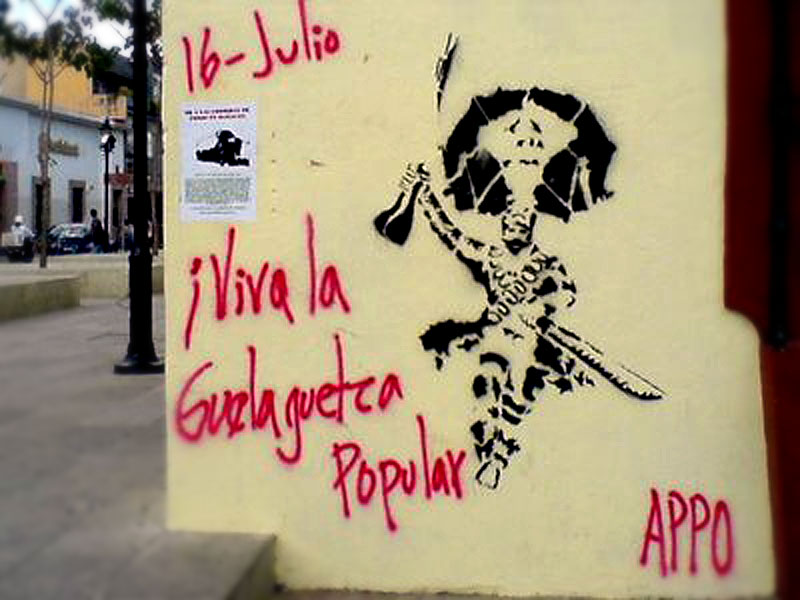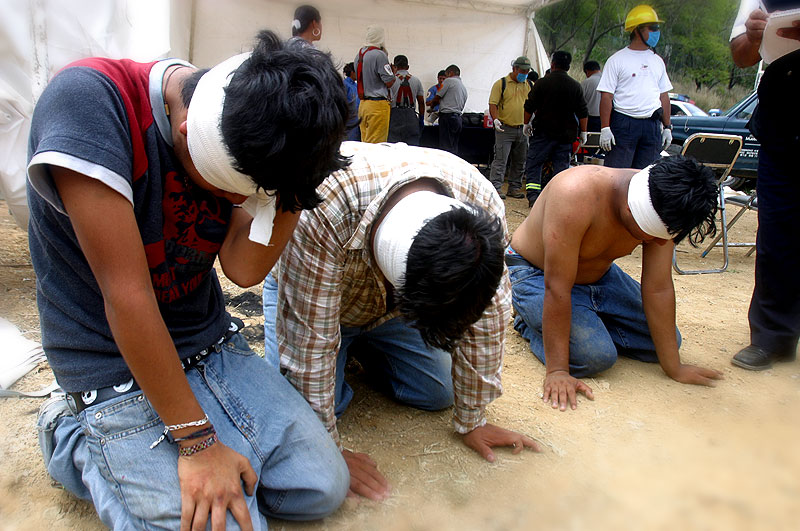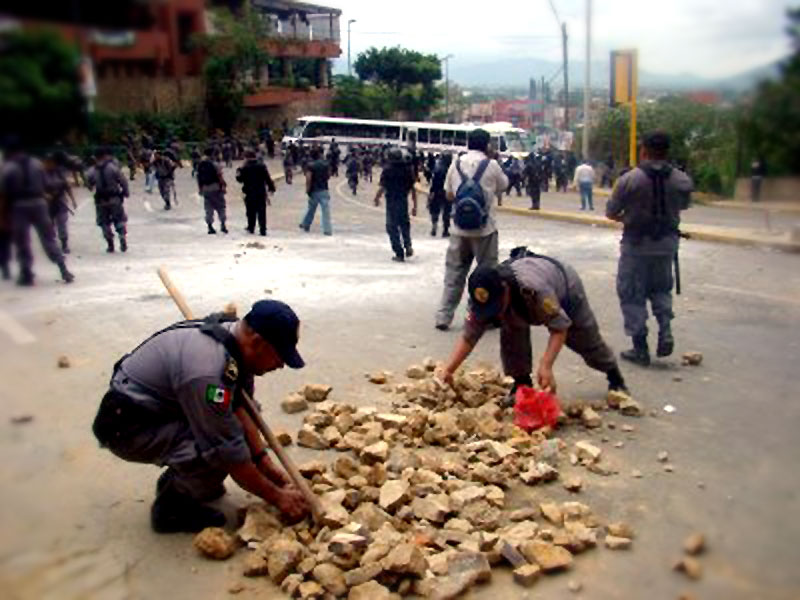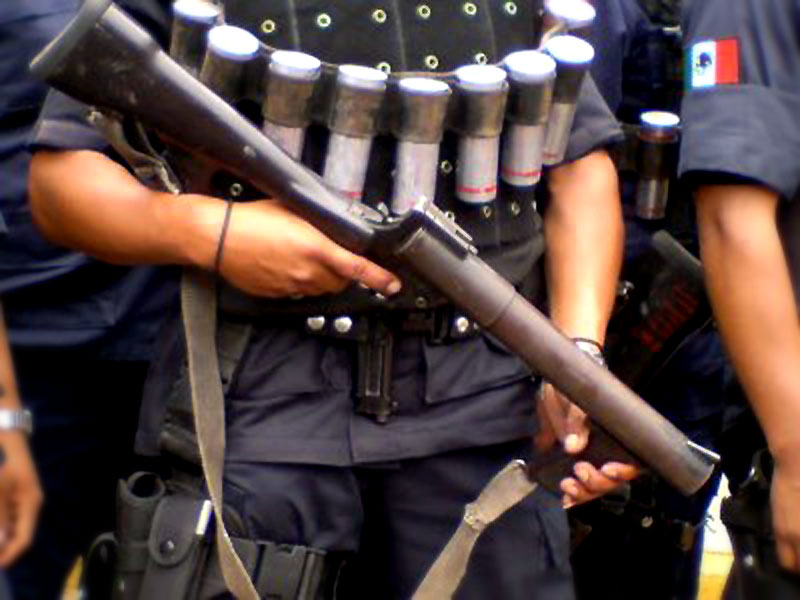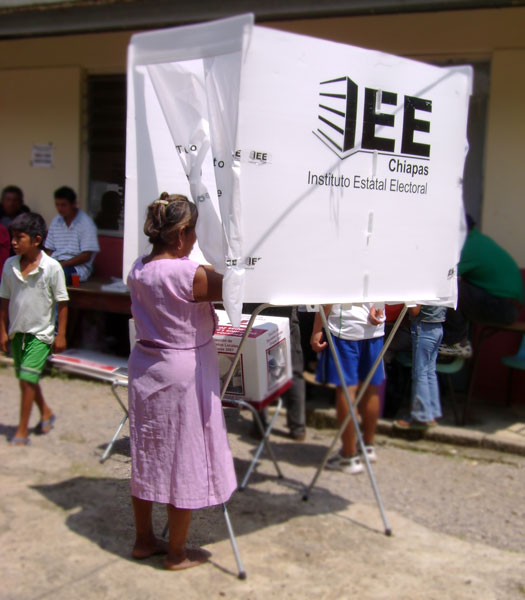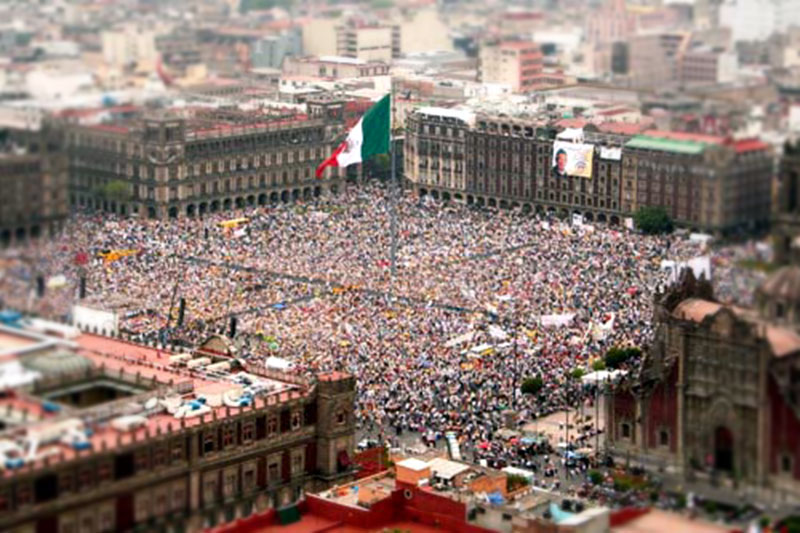
ANALYSIS: Mexico – A year after the 2006 elections
31/08/20072007
01/01/2008|
On June 14, 2006, a blockade of Section 22 of the National Union of Education Workers (Sindicato Nacional de Trabajadores de la Educación, SNTE), occupying the center of the City of Oaxaca, was violently repressed by public security forces. As a result of this incident, combined with growing public dissatisfaction, widespread protests exploded across the State of Oaxaca, led by the Popular Assembly of the Peoples of Oaxaca (Asamblea Popular de los Pueblos de Oaxaca, APPO), demanding the resignation of State Governor Ulises Ruiz Ortiz. On October 27 2006, following a violent confrontation, the Federal Government authorized the dispatch of more than 4,500 representatives of the Federal Preventative Police (Policía Federal Preventiva, PFP) to the City of Oaxaca. The PFP carried out numerous detentions, later the source of denunciations of mistreatment. Another confrontation occurred on November 25, 2006, resulting in serious damage to public buildings and the detention of more than 149 people. Between August 3 and 12 of this year, Sipaz conducted a visit to Oaxaca. We used the information collected on that trip to write a report attempting to give an overview of the situation in the State (“Oaxaca un conflicto no resuelto: actualización”, in Spanish). This article is a summary of the more detailed report. |
On August 5, 2007, the day of congressional elections for the State, the Governor of Oaxaca, Ulises Ruiz Ortiz, announced to the press: “[The elections are] where citizens can decide what they want, what they support, and they will certainly vote for peace. […] Many people said that the conflict was going to begin again, many said that there wouldn’t be Guelaguetza this year [popular Oaxacan festival], many said that there would be violence around the elections. This is pure speculation; Oaxacans are at peace.” However, various factors of the current situation call this statement into grave doubt.
The confrontation of July 16
On July 19, the Oaxacan Human Rights Network (Red Oaxaqueña de Derechos Humanos, RODH) announced: “The conflict which began last year continues. Oaxaca IS NOT AT PEACE, as the State Government affirms and claims to the State’s media.” (1)
Background
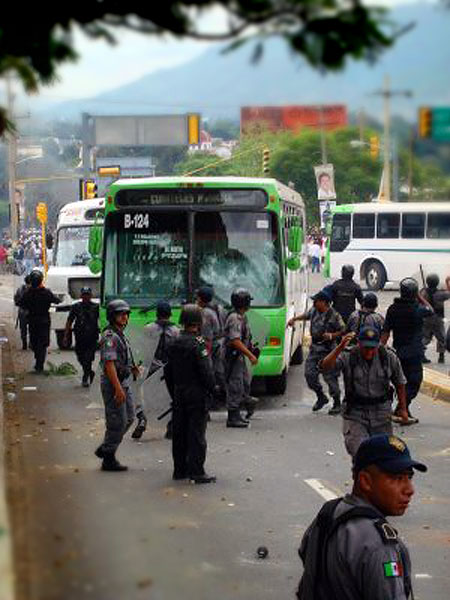
Several days before the confrontation, various events highlighted the potential risk of a violent situation unfolding. On June 14, 2007, a march was held to commemorate the police operative of the previous year. Thousands participated in the protest, making clear that the social issues which had mobilized broad sectors of the Oaxacan population were still unresolved. From June18 onwards, a symbolic blockade was established in the main square of the City of Oaxaca.
On June 27, the APPO declared itself in a state of maximum alert, and denounced “the increasing tension of the low intensity war which Ulises Ruiz is conducting against the people of Oaxaca”. On June 27, a negotiating table was established between teachers’ representatives, the APPO and the Secretary General of the Government of Oaxaca, Manuel García Corpus. Among the topics discussed in the weeks which followed were the revision of the charges leveled against those in detention, and the cancellation of pending arrest warrants.
On July 12, the State Educational Assembly was established. It decided to boycott the “Official Guelaguetza” and instead organize a “Popular Guelaguetza”. A testimony from a representative of the Committee of Family and Friends of the Disappeared, Assassinated and Political Prisoners of Oaxaca (Comité de Familiares y Amigos de los Desaparecidos, Asesinados y Presos Políticos de Oaxaca, COFADAPPO) helps us understand what was at stake for the social movements. “Traditionally, Mondays on the Cerro were times of community sharing. Every town in the State brought their products, their dances. But the government began to commercialize the event, with entry costing 500 pesos [USD45]. […] It was blatant theft by the government. Nobody knows where that money went. It was most likely a savings account for the current government.”
A woman member of Section 22 explained: “For the teachers, the idea was to boycott the Guelaguetza, and conduct another event which would show the strength which the movement still has. The first idea was to hold the fiesta on the Cerro del Fortín, and if that weren’t possible, in another place which was safe for our colleagues. We didn’t want any more deaths or detentions.”
On July 13, Beatriz Paredes, the National President of the Institutional Revolutionary Party (Partido Revolucionario Institucional, PRI), the same party as Oaxaca’s governor, held a meeting with PRI candidates and militants in the Guelaguetza Auditorium, located on the Cerro del Fortín. From that moment on, the Cerro was surrounded by various police groups.
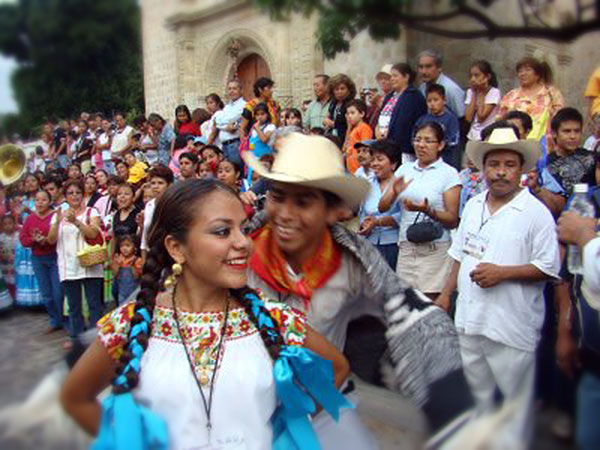
The facts
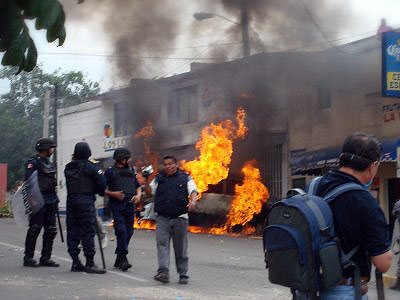
On the morning of July 16, contingents of protesters left the main square of the City of Oaxaca for the Cerro el Fortín. When they arrived in the area around the Guelaguetza Auditorium, they found rows of police officers protecting the auditorium itself.
Sergio Segreste, Secretary of Civil Protection, explained their presence: “A security operative was implemented to protect the Guelaguetza Forum. Oaxaca survives exclusively on tourism and tourist wares. There is no industry. Guelaguetza is an important opportunity, which was suspended last year. […] Additionally, the boycott and the Popular Guelaguetza had both been announced. We conducted a dissuasive rather than a preventative operation.”
According to eyewitness testimonies, the atmosphere was still that of a fiesta at the beginning of the day. Negotiation was attempted to allow the protesters to access the Cerro, but the police continued to block the way. Pressure increased amid the chants of “To the Fortín, to the Fortín, we’re all going to the Fortín” and “Ulises, understand, Guelaguetza isn’t for sale”. From that point on, versions of what happened differ.
According to the official version, the aggression originated from the protesters. Sergio Segreste, present at the Cerro el Fortín that day, states: “They launched rockets at us to break the security barricade. […] We repelled the aggression, which became more violent. […] The barricade advanced. On the corner at the traffic lights, a bus crashed into a business. They held six buses hostage, as well as a truck belonging to a hotel. The police commanders had the following instructions: detain, subdue, hand over. There were possibly excesses. I saw great courage, high levels of violence which provoked human reactions in the police officers.”
The protesters offer various versions of events, most of them recognizing that amid so much tension, anger and confusion, any act conducted by infiltrators or by the police would have been enough to detonate violence.
The costs
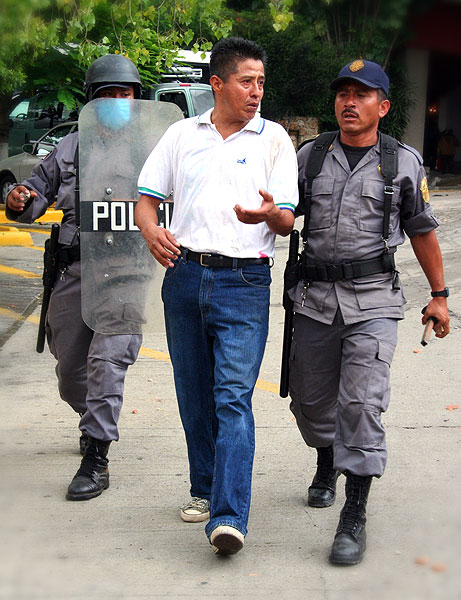
The violent clash left at least 60 people wounded on both sides (15 of them police officers). Two of the wounded were taken to the hospital. Forty-two people were detained, some of them some time after or some distance from the actual confrontation. Among those detained were six minors, who were released the next day.
In an interview with SIPAZ, the Attorney General of the State of Oaxaca, Evencio Nicolás Martínez, said in relation to the detentions: “We found a wall of bottles/Molotov cocktails. The detentions were conducted at the scene of the crime. The protesters set fire to the hut of a hotel, there was damage to the building. For that reason they were detained. […] The police repelled the aggression. Of course we are against any excesses. But we are human beings. Being a police officer doesn’t deprive us of human rights.”
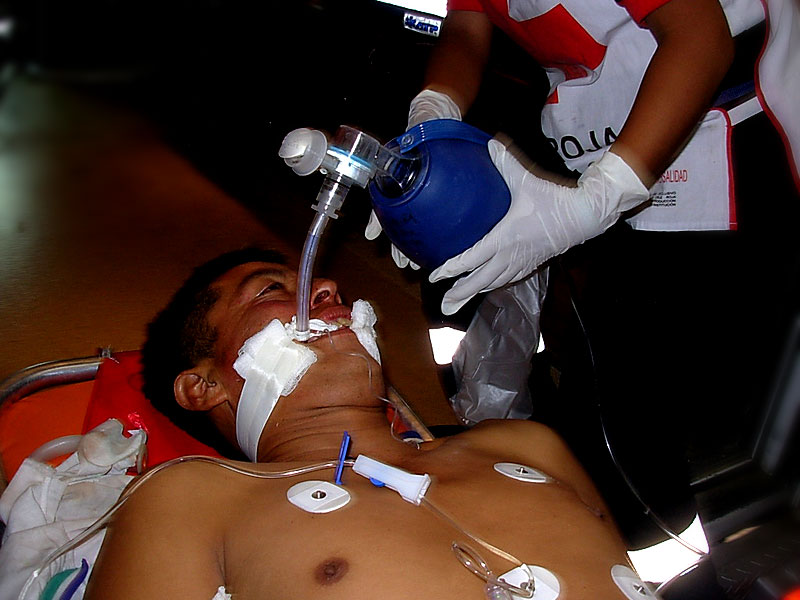
Regardless of the existence of crimes (and it still remains to connect the crimes to those detained for them), in terms of human rights the costs of the repression are worrisome. Many photos from the confrontation raise unanswered questions. For example, in photos of those detained and taken to the car park of the auditorium, instead of the Public Ministry, it can be seen that those detained are on their knees, blindfolded, barefoot, evidently humiliated. In one particular case, like that of Hemeterio Marino Cruz (hospitalized in serious condition), what happened to cause him so many injuries, hours after giving himself up without resisting arrest?
A week after the confrontation, the Offical Guelaguetza was held under strict police control. “The Official Guelaguetza was a failure. Only the police and those forced to be there could get people into the Guelaguetza Auditorium. Guelaguetza isn’t about Ulises, it’s about the people,” assured Erangelio Mendoza, councillor of the APPO.
“Institutional crisis in Oaxaca”?
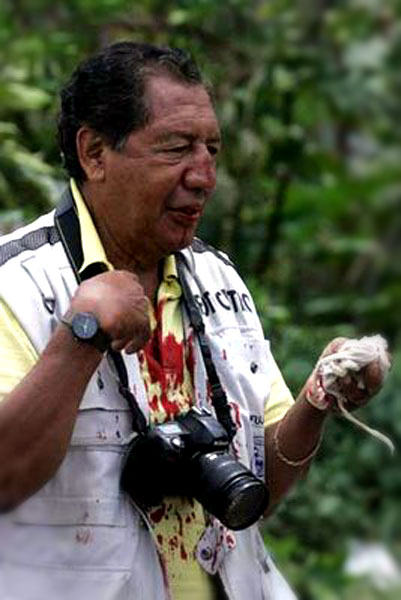
The bulletin issued by the Oaxaca Human Rights Network concerning the events of 16 July, cited above, highlights: “It’s important to mention that the violence which was once again unleashed exists because the crisis has not been resolved. There have been no answers to the social demands at the root of the violence.”
Marcos Leyva from EDUCA (Service of an Alternative Education) emphasizes: “In the past three years (2004-2007), Oaxaca has experienced a severe institutional crisis which has drawn the State into a social and political emergency.” The situation grew worse in 2006 because of the political crisis which followed the events of June 14, 2006 generated by a greater polarization of political positions taken in relation to the conflict on the one hand, and by the high costs of the conflict’s violence on the other.”
Alma Soto, of the Committee for the Liberation of Detainees of 25 November (Comité de Liberación 25 de Noviembre), adds: “In Oaxaca, rule of law doesn’t exist. Since June 14 last year, there have been various confrontations. […] In that time, 600 people have been detained in an illegal and arbitrary manner by police, parapolice and military organizations, up to 4 to 6 hours after the actual confrontation. People have been transported to military areas. Detainees have been kept entirely incomunicado, and for family members and lawyers it has been difficult to get precise information on the charges relating to the detention. There is a lack of security for lawyers and human rights defenders.”
Numerous national and international human rights organizations have denounced serious human rights violations of both Mexican and foreign citizens. According to these sources, those primarily responsible for these abuses have been agents of the municipal, state and federal police, and in many circumstances non-uniformed police officers or organized groups of armed individuals, apparently acting in coordination with the state security forces. (See the Human Rights section of the Sipaz report.)
… … … … … …
The elections
August: State elections
The elections of August 5 were held in a relatively calm atmosphere, much more so than the pre-electoral situation indicated. In a public declaration released prior to the elections, the teachers announced: “Ulises Ruiz Ortiz has organized State elections, which explains why he has repressed citizens with such care, to demobilize the citizenry, […] to induce the fear-vote and win the faithful votes for his party, to reduce the vote which would punish him [for his actions].” The opposition parties also denounced the continuation of traditional PRI practices such as coopting and buying votes, and forcing the choices of voters.
Although 98.87% of the 4,574 polling booths were established, the big winner in the elections was abstentionism. More than 1,500,000 people (70% of registered voters) chose not to vote. The PRI maintained its majority in Congress, which will give greater stability to the government of Ulises Ruiz for the next three years. The grassroots movements express the fear that the government will take advantage of this situation to exact revenge, asphyxiating the communities which have rebelled against the State Executive.
How are we to comprehend that the PRI continues to win elections despite clear social discontent? According to Marcos Leyva from EDUCA, “The political parties have not been able to read the grassroots movement. The Democratic Revolution Party (Partido de la Revolución Democrática, PRD) has played and continues to play an ambiguous role. This has had its effect on voters. If you’d like to bet that it won’t be a PRI Congress, go to the list of the Coalition for the Good of Everyone (Coalición por el Bien de Todos) and that’s where you’ll find many of the PRI candidates.”
October: Municipal elections
The process of electing 152 municipal presidents (mayors) through the party system was conducted amid high political tension. (Of the 570 municipalities in Oaxaca, the remaining number elect their authorities according to traditional voting systems.) The cost was various confrontations, some with gunfire, resulting in 13 people wounded. In the municipality of Santiago Laollaga, the election could not be held. Accusations of vote-buying and -coopting abounded, in addition to take people to the polling places, accusations predominantly leveled against the PRI. As in the State elections, voter abstention was quite high (greater than 45%). In total, the PRI won 90 of the 151 councils in contention.
… … … … … …
The grassroots movement
The APPO
In recent months, the APPO has suffered a certain degree of dispersion, partly as a consequence of the repression and partly because of the ideological differences which have existed within the assembly since its founding. These differences were temporarily bypassed when members of the APPO had a one unified demand: the resignation of Ulises Ruiz.
However, the accusations of corruption and errors by the leadership continue. According to one member of Oaxacan Voices Building Autonomy and Freedom (Voces Oaxaqueñas construyendo Autonomía y Libertad, VOCAL), “the people are tired of their ‘representatives’. They had placed their hopes in the leaders again, but now, once the marches are finished, nobody stays to listen to the speeches.”
Although it is difficult to contemplate other scenarios given the complexity of the conflict, Marco Leyva of EDUCA says: “We’ve thought of the APPO as an organizational structure with its 252 councillors. But the APPO isn’t a formal structure. However, there are certain things which have remained: the spirit, the the contagiousness of the APPO […] there has been an awakening. People no longer want to be silent and put up with the situation. […] That has been the contribution of the APPO. As an organizational tool, creativity will be needed in order to maintain its form.”
The teachers
The teachers also find themselves in a complex situation. Their key leader, Pacheco Rueda, heavily stigmatized for his role in the negotiations last year, has disappeared from the political scene. The group has still not conducted the pending internal elections to choose his replacement. As is well known, Section 22 has been the spine of the APPO, which has given structure to the popular movement. The question is whether they wish to maintain that leadership, particularly now that the union has achieved greater gains than ever before for teachers.
Marcos Leyva states: “There has been a high level of burnout within the union. Section 22 used to achieve its demands by applying the motto ‘protest-negotiate-protest’. They don’t want to lose the possibility of negotiating. Taking on a role in the vanguard has been a difficult adjustment to make.”
EPR and armed dissent
In July 2007, the Popular Revolutionary Army (Ejército Popular Revolucionario, EPR: an armed group which appeared in Mexico in 1996) claimed responsibility for PEMEX (Mexican Petroleum) pipeline explosions in Guanajuato and Querétaro. They claimed that they were part of a campaign to demand the release of two of their companions, Edmundo Reyes Amaya and Gabriel Alberto Cruz Sánchez, both of whom were disappeared by state forces in Oaxaca in May 2007. Subsequently, the EPR claimed responsibility for an August 1 explosion in a shopping center in the City of Oaxaca, warning that they are ready “to keep on going” with their campaign.
Many of the participants we interviewed highlighted that the EPR has been used as a smokescreen by the government, particularly at the time of the elections. Sergio Beltrán from Unitierra commented: “There are definitely enormous challenges facing the Popular Revolutionary Democratic Party (Partido Democrático Popular Revolucionario, PROCUP). Following the death of Lucio Cabañas, it’s possible that the EPR has managed to unify cells which were previously dispersed. […] Right now, the EPR is giving URO [Ulises Ruiz Ortiz] a pretext for pressuring the federal government to intervene.“
Marcos Leyva from EDUCA adds: “The EPR exists and has a strong presence. […] Here we enter into the world of the underground left, where tactical alliances are formed with the idea of maintaining a prolonged popular war. On the barricades we saw actions that made it clear that they hadn’t learned them in only three nights. They’re trained, and it’s a factor which has to be taken into account.”
It has been repeated time and again that the closing of channels of dialogue and negotiation could corner social movements, forcing them into more radical forms of dissent. A July 2007 article by Gustavo Esteva entitled “Desnudar la verdad” [“Undressing the truth”], makes this clear(2) : “In such a climate, when people are exhausted by endless democratic processes, only to be humiliated, what are they supposed to do? Of course, it’s not a question of binary options, violence or non-violence… But when people decide to resort to violence because all of their other options have ended in desperation, should we condemn them?”
In such a tense situation, a spontaneous act which occurred on 16 July is worth mentioning. Despite the reigning oppression, 40 people sat down and remained seated in a nonviolent act of civil resistance. After an hour, the police left the protest site. One of the participants shared their testimony: “I stop to look down the street, sitting on the pavement with my eyes full of tears and my throat burning [from the teargas], and behind me I can hear sticks and boots. But my attention is focussed on the four streets below which are blocked off by a crowd of people who are watching, stunned and frightened, as we sit down blocking the path of the police. Suddenly someone says, ‘they’re going,’ and unlike, in the previous combats, you don’t hear them say a word. Later, like in the movies, the rain starts to fall, still in silence, and I get up and think that this time we won the battle.”(3)
… … … … … …
- RODH bulletin – in Spanish (Return..)
- Article by Gustavo Esteva – in Spanish (Return..)
- Testimony – in Spanish (Return..)

